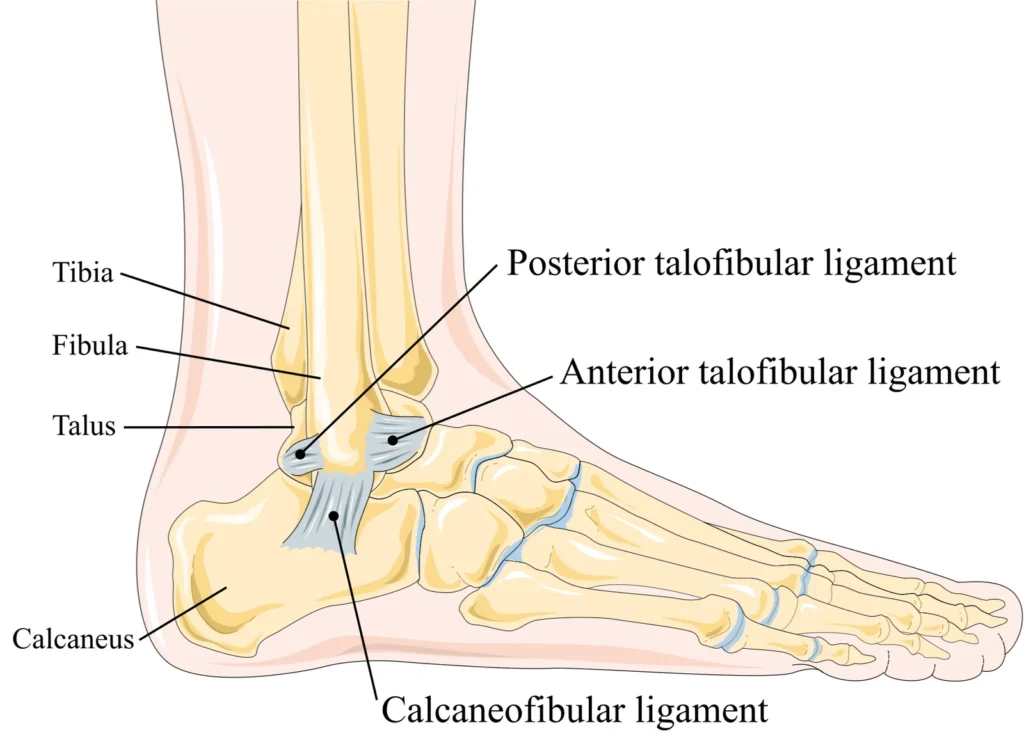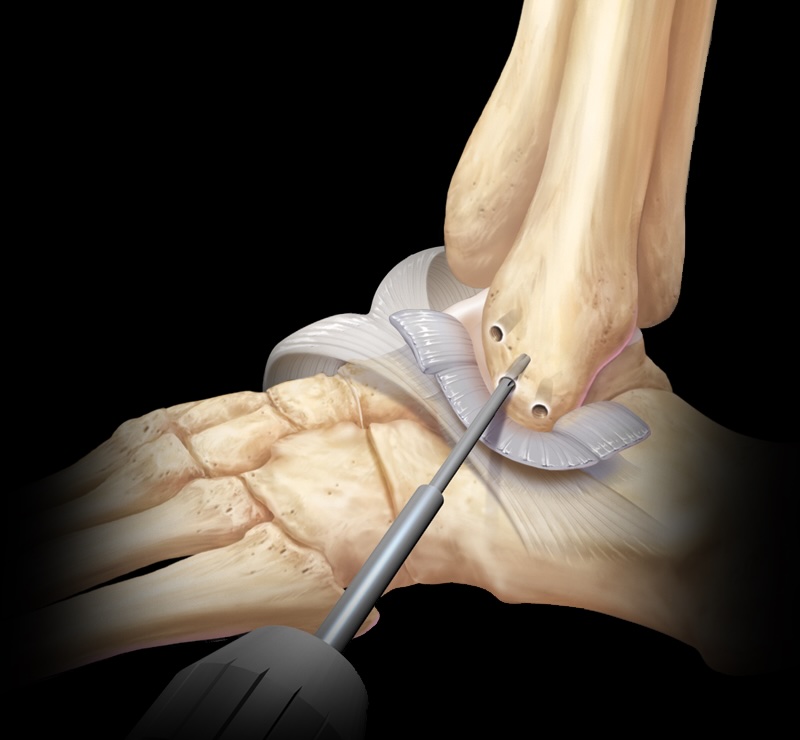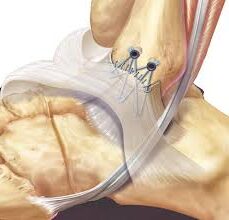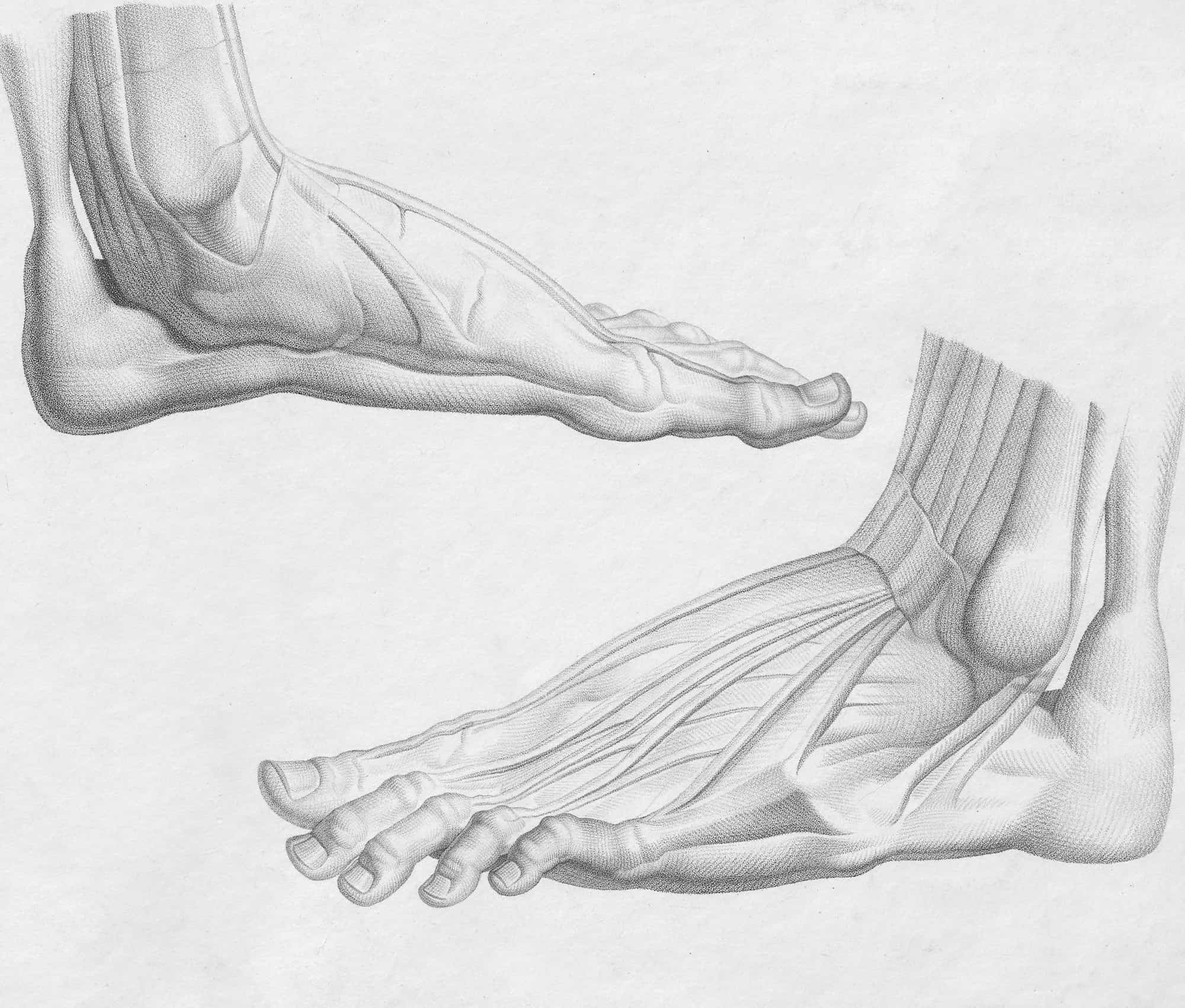Ankle stabilisation surgery is typically recommended for individuals who experience ongoing ankle sprains despite completing at least three months of physiotherapy and home-based exercises. See more about the non-surgical management of ankle instability below:
It is suitable for those who have chronic ankle instability or lack confidence in their ankle’s ability to support weight that interferes with daily activities. If conservative treatments fail to restore stability and function, surgical intervention may assist to improve your quality of life. It is rare for physiotherapy and balance training to be unsuccessful treatments for ankle instability.

What the surgery involves
Ankle stabilisation surgery involves the stabilisation and occasionally arthroscopy:
Ligament Repair and Stabilisation
An incision is made over the lateral (outer) ankle. The damaged or stretched ligaments are reattached to the fibula (lower leg bone) with appropriate tension to restore stability. Sometimes, a non-absorbable suture material may be added to reinforce the repair, especially if it is the second surgery for the same condition. If loose bone fragments are present or the peroneal tendons are inflamed or torn, these issues can also be addressed during the surgery.


Ankle Arthroscopy
Through two small incisions at the front of the ankle, your surgeon uses a camera to assess and treat any inflammation of the joint lining (synovitis) or damage to the joint surfaces. This minimally invasive approach enhances surgical precision and optimises outcomes.
Deformity Correction
In rare cases, the recurrent ankle sprains are actually the result of a misshapen foot, which may not be noticeable to you. This will be assessed by Dr Lambers in your consultation and in some instances it may be recommended that the deformity is corrected at the time of ligament repair to reduce your risk of instability returning after surgery.
What to expect after surgery
Immediate Post-Operative Care
- You will be fitted with a specialised walking boot immediately after surgery
- You may begin weight-bearing right away, but crutches are often used for the first 1–2 days to provide additional support
- Elevating your leg during the first week helps minimise swelling
Rehabilitation Timeline
- Weeks 1–4: Focus on restoring ankle and hindfoot range of motion through specific exercises, along with calf and peroneal muscle strengthening
- Weeks 4–8: Begin more intensive strengthening exercises and proprioceptive (balance) training
- After 8 Weeks: Progress to sport-specific activities and training, supervised by a physiotherapist
View the full rehabilitation protocol below:
How long will you be in hospital?
Ankle stabilisation surgery is performed as a day procedure, allowing you to return home the same day. You’ll arrive at the hospital 1–2 hours before your scheduled surgery time to meet with your surgical team and anesthetist, who will discuss your pain relief options.
Usual recovery times
Most patients can expect the following recovery milestones:
- 1–2 Days Post-Surgery: Walking with crutches for support
- 4–6 Weeks: Gradual transition to regular footwear as range of motion improves
- 8–12 Weeks: Resumption of low-impact activities and light training
- 3–6 Months: Full recovery, including a return to sports or other high-impact activities
Potential risks
- Surgery may result in damage to superficial nerves, causing numbness, tingling, or discomfort around the ankle
- Some patients may experience persistent pain following the procedure
- Reduced range of motion or stiffness in the ankle can develop after surgery
- While rare, some cases may require additional procedures to address unresolved instability or complications
- Though uncommon, infections at the surgical site may occur, requiring antibiotics or further treatment
- There is a small risk of clots forming in the legs or lungs, requiring preventive measures
The decision to undergo ankle stabilisation surgery
Speak with Dr Lambers and take the time to consider whether this procedure aligns with your goals. He is available to discuss any concerns to ensure you make an informed choice.

